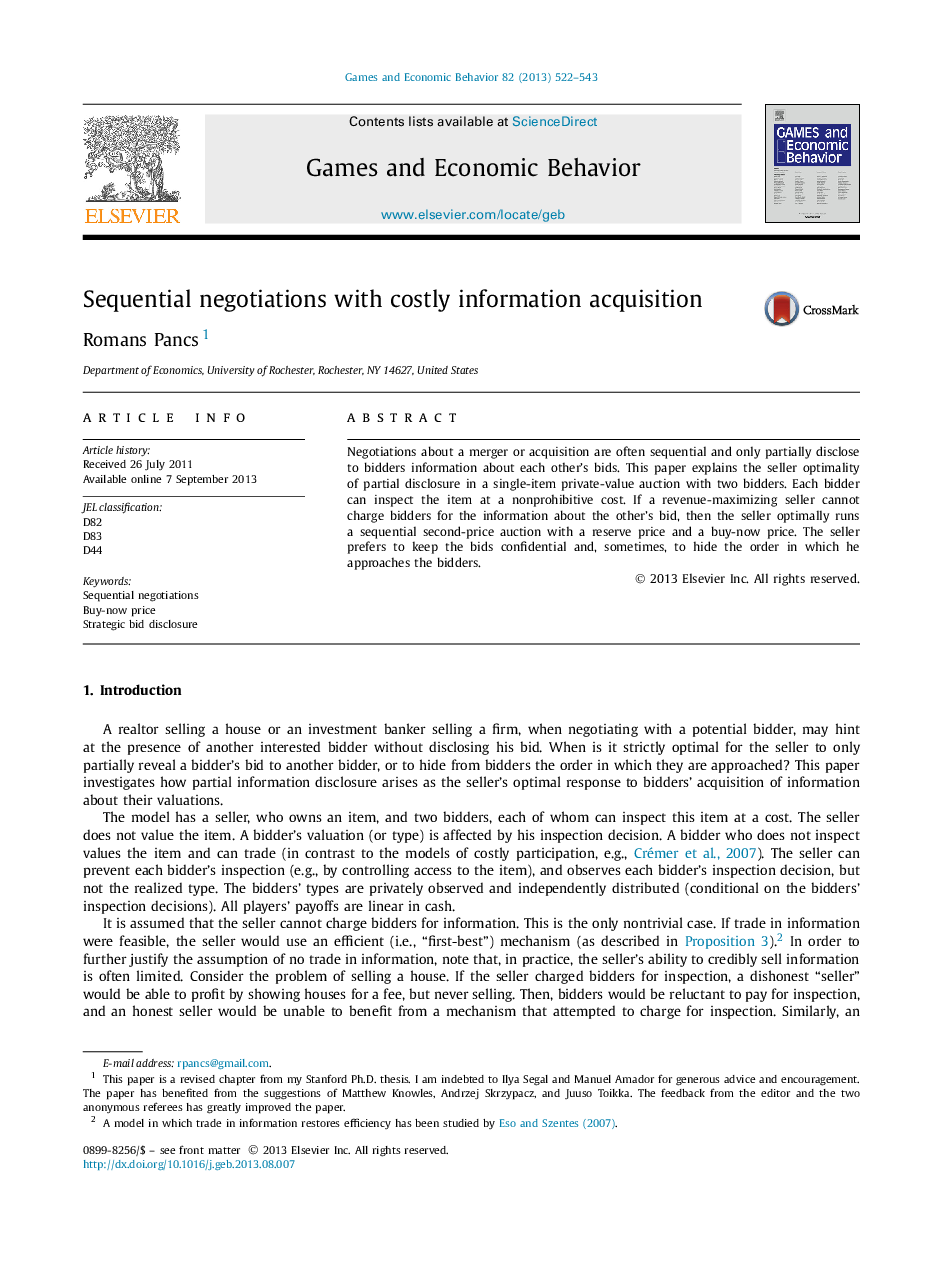| Article ID | Journal | Published Year | Pages | File Type |
|---|---|---|---|---|
| 5071784 | Games and Economic Behavior | 2013 | 22 Pages |
â¢This paper explains the seller optimality of partial disclosure in a single-item private-value auction with two bidders.â¢The identified optimal mechanism is a sequential second-price auction with a reserve price and a buy-now price.â¢The seller optimally keeps the bids confidential and, sometimes, hides the order in which he approaches the bidders.
Negotiations about a merger or acquisition are often sequential and only partially disclose to bidders information about each otherʼs bids. This paper explains the seller optimality of partial disclosure in a single-item private-value auction with two bidders. Each bidder can inspect the item at a nonprohibitive cost. If a revenue-maximizing seller cannot charge bidders for the information about the otherʼs bid, then the seller optimally runs a sequential second-price auction with a reserve price and a buy-now price. The seller prefers to keep the bids confidential and, sometimes, to hide the order in which he approaches the bidders.
